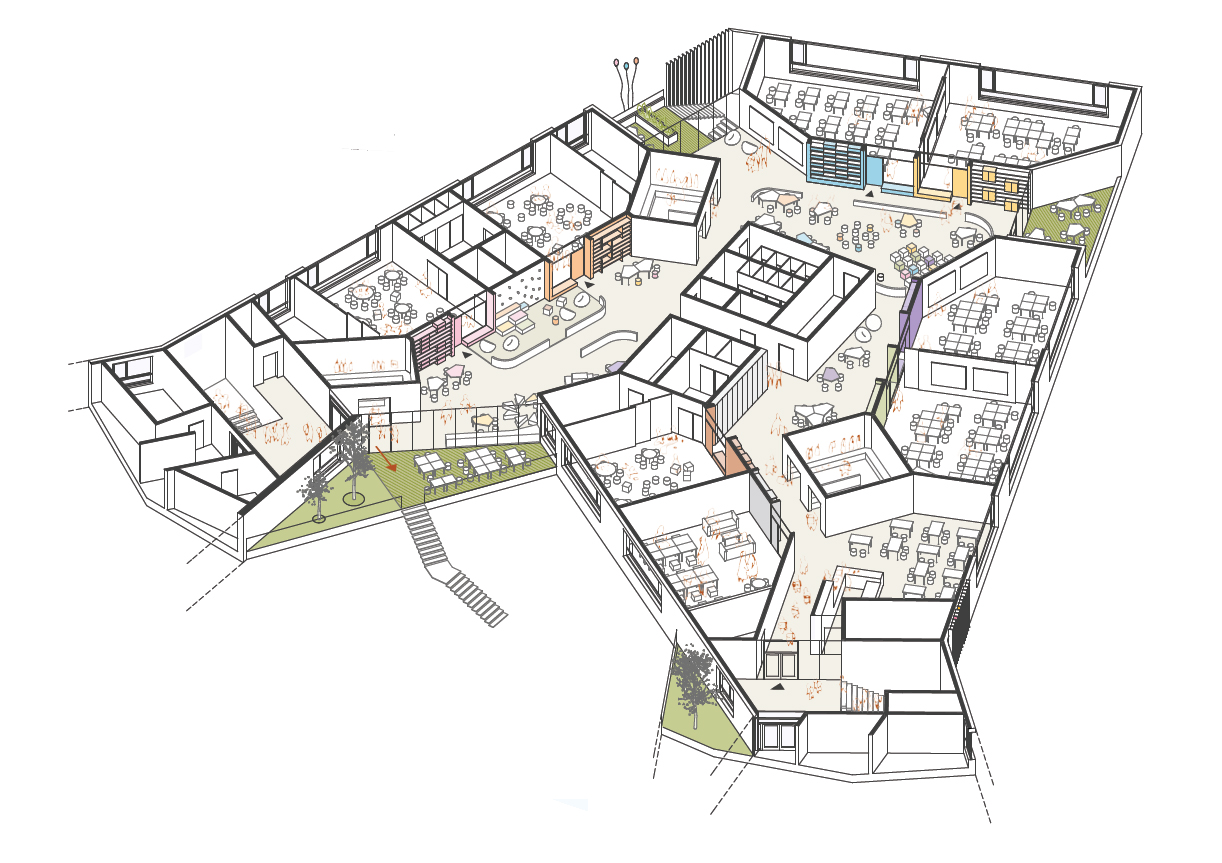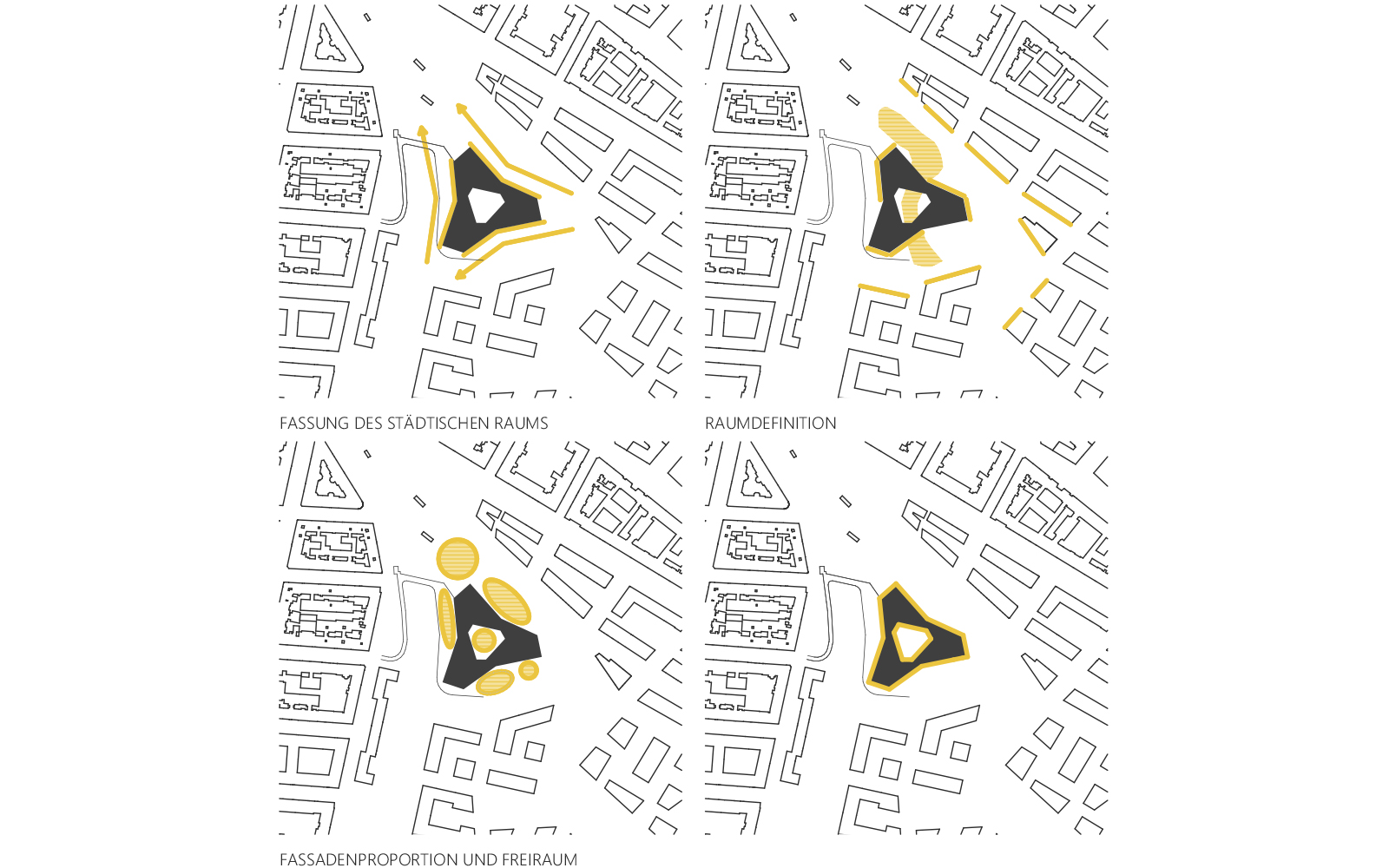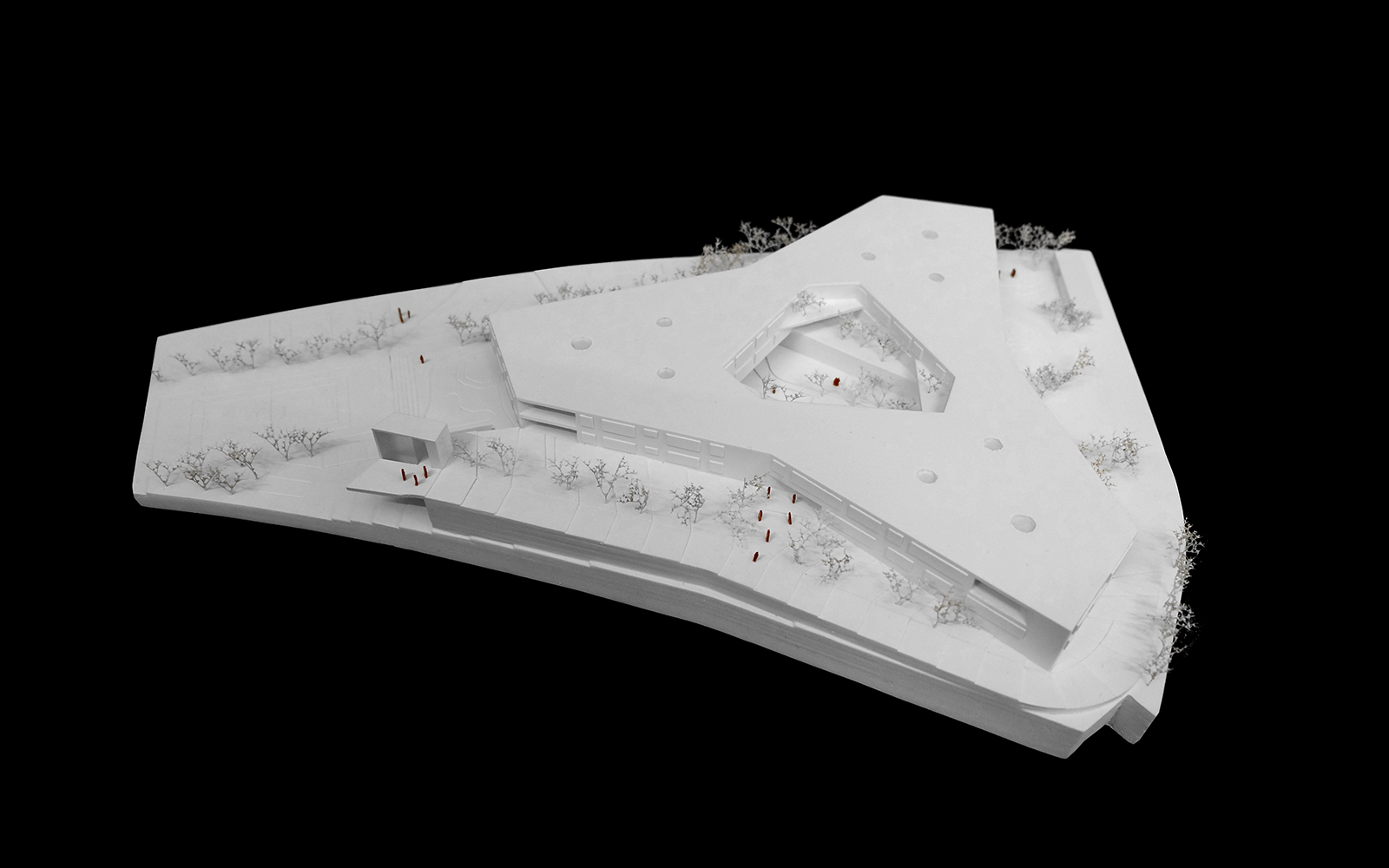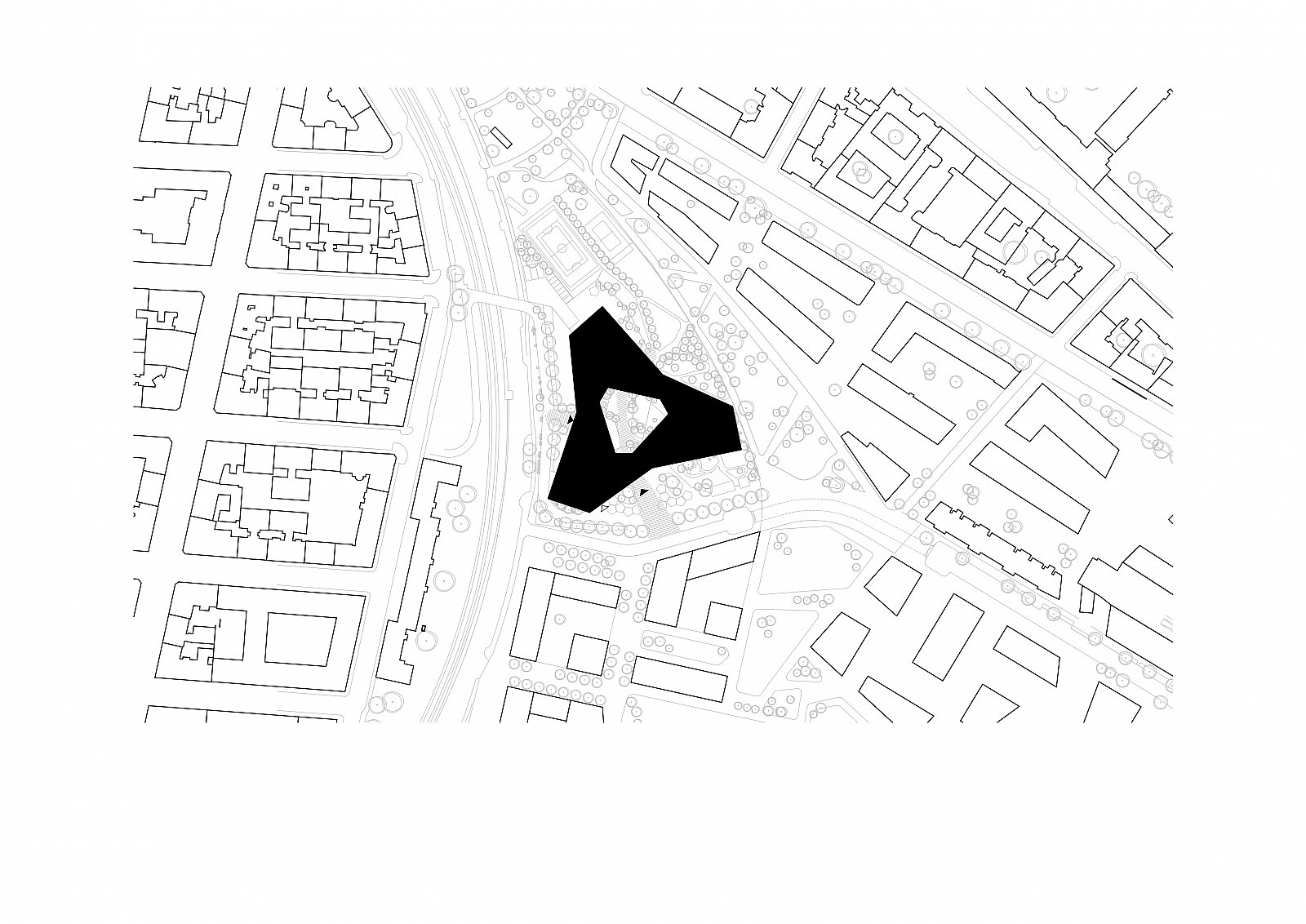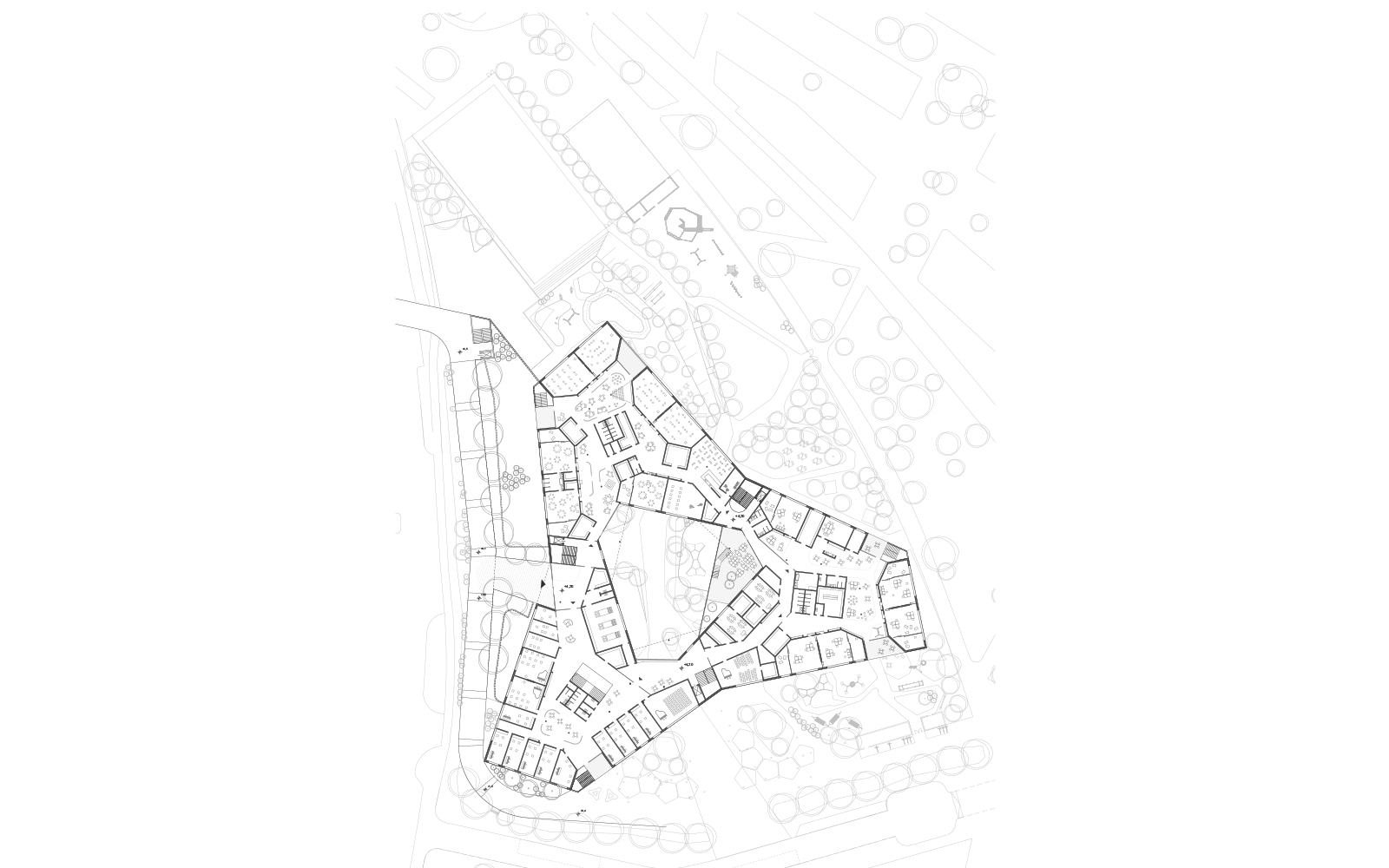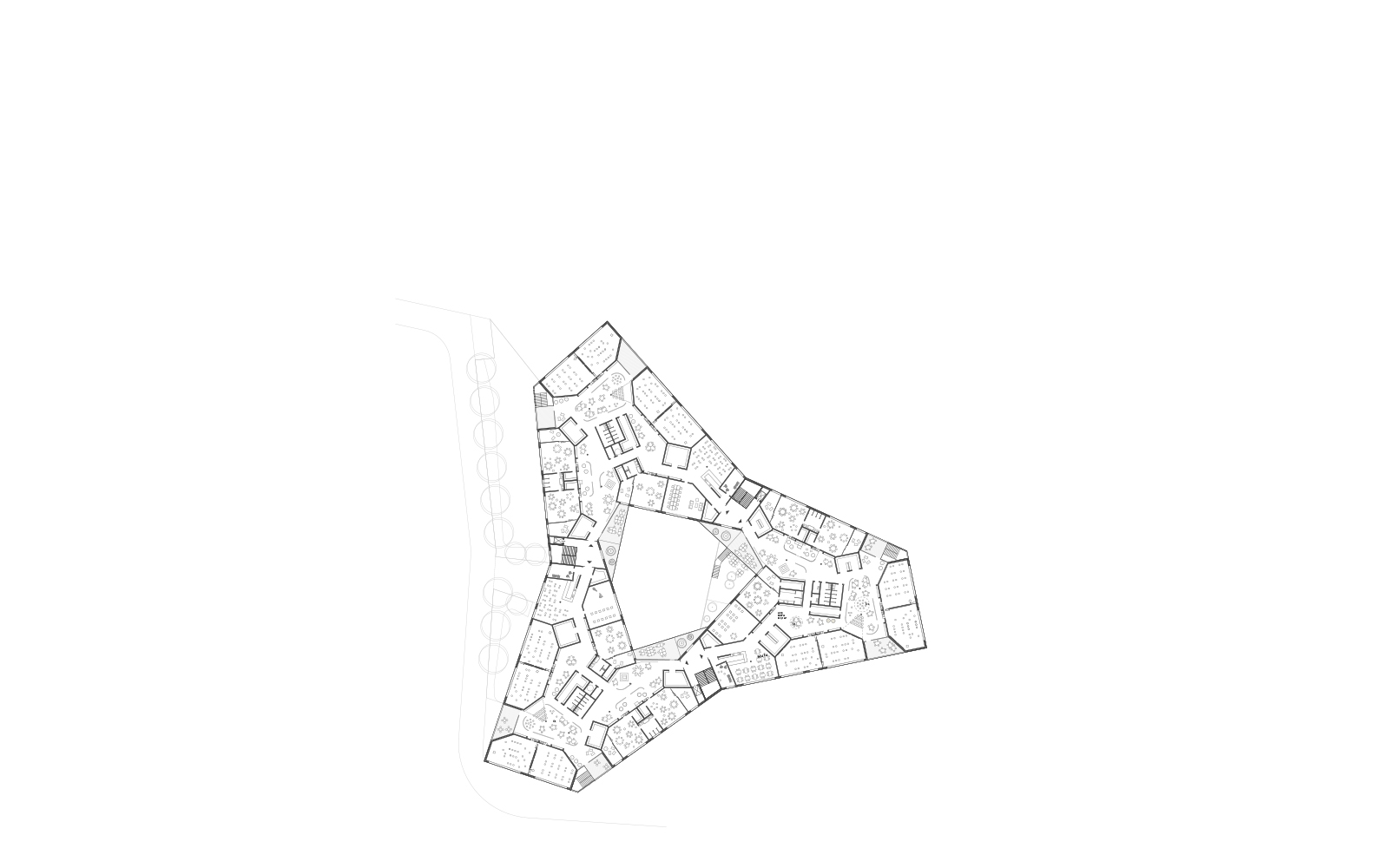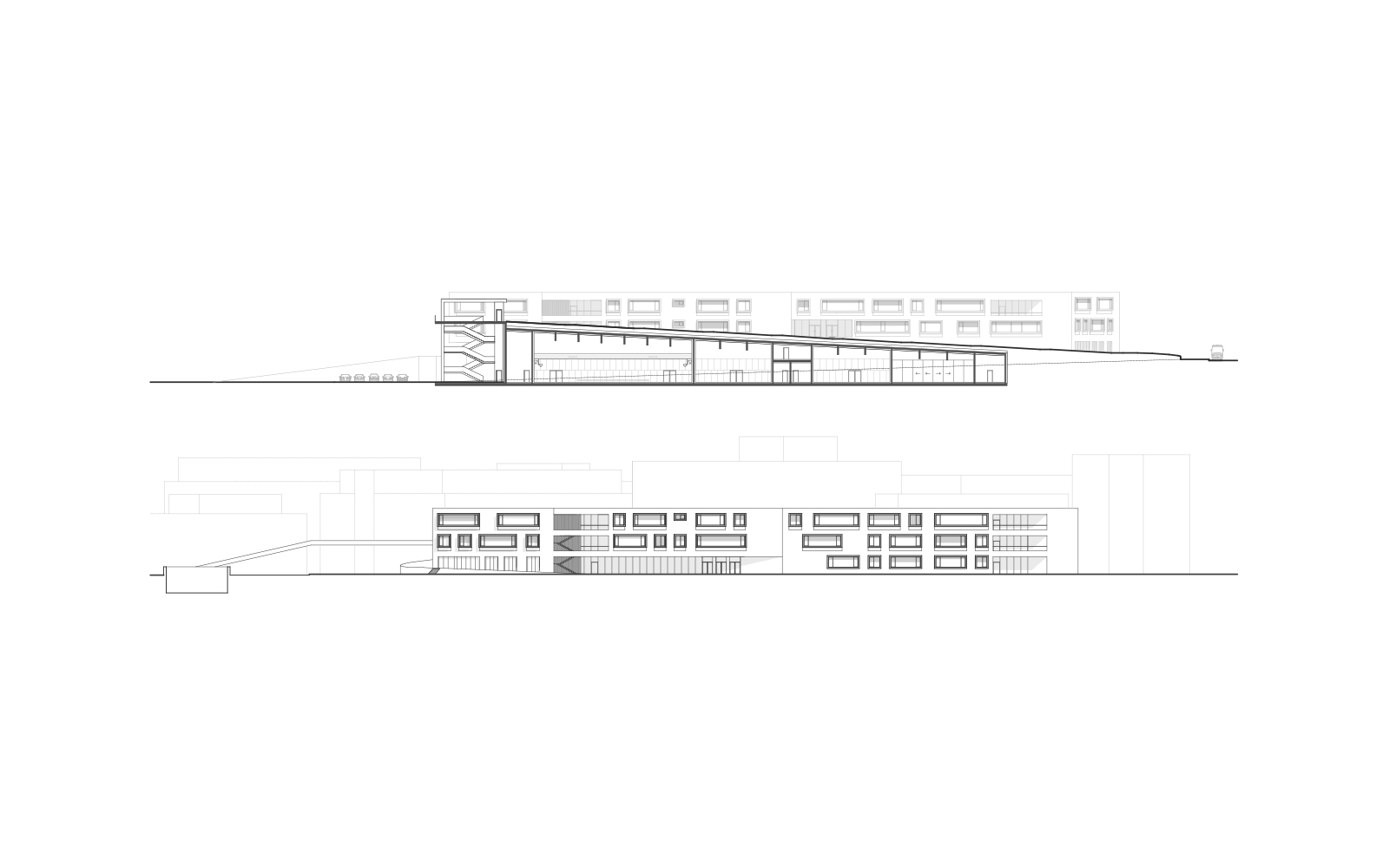Aron Menczer Education Campus
2017
2017
Aspangründe-Eurogate, 1030 Vienna
2017 Competition, 3rd prize
Awarded by: City of Vienna - MA 19
The Aaron Menczer Educational Campus is not located in the open countryside, but in the Aspanggründe-Eurogate urban development area, on the south-eastern border of the densely built-up city centre in the 3rd district of Vienna. Despite its compact configuration, it still offers a wide range of open space and also presents itself as a spatial urban organism, which on the one hand forms part of the surrounding city while on the other hand it is organised and conceived itself in a clear and varied manner like an independent urban structure with a green centre: part of the macrocosm of the city and urbanistically conceived as a school which forms a microcosm in itself by means of appropriate design and arrangement of spaces and places. Interaction with the surrounding city and spatial interaction within the complex - both in manifold ways: In this way, the place of education becomes a natural part of urban life on the one hand and a varied, manageable learning and living environment with a high residential value on the other.
The building typology of the courtyard house, which is in line with the buildings in the neighbourhood, typologically integrates the neighbouring old town of the Fasanviertel and the new buildings on the area of the Aspanggründe.
The arrangement of the educational areas (Bildungsbereiche - in short "BIBER"), the access to and pathways through the entire building as well as the layout of the open spaces create spatial synergies that foster and encourage cross-year and cross-class encounters, active cooperation among the students and therefore mutual learning from each other. The rooms and their furnishings are intended to encourage the children to actively engage with the space and, through the possibility of a variety of constellations and usage scenarios, to create an appropriate environment for all-day living, learning and playing, also based on their own initiative, depending on the situation and needs. The Aron Menczer Education Campus is intended to offer an ambience in which children are allowed to be children - in accordance with the spirit of its name-giver.
The BIBER has 195 inhabitants of different ages, different abilities and different needs. On the one hand, this means meeting all these requirements as far as possible, but it also offers the opportunity to learn not only side by side, but also with and from each other and to benefit in a number of different ways.
With a central main square, smaller, more protected areas, forecourt areas that can be furnished and used in most different ways, places of concentration and others where it is allowed to be noisy and lively, as well as a small park on the terrace, the individual BIBERs are organised like an urban microcosm or, as the Viennese say, "Grätzel". Wall areas that can be designed and used by the participants themselves are an additional incentive to be creative together. The campus ring is - BIBER-internally and connecting all BIBERs - the horizontal artery that brings everything together in this city of short pathways, where each of these pathways is never just a path alone, but rather a sequence of multi-functionally usable places. In this way a milieu is being created that simultaneously meets many needs and allows for both planned and accidental interaction, thus stimulating the community.
The building typology of the courtyard house, which is in line with the buildings in the neighbourhood, typologically integrates the neighbouring old town of the Fasanviertel and the new buildings on the area of the Aspanggründe.
The arrangement of the educational areas (Bildungsbereiche - in short "BIBER"), the access to and pathways through the entire building as well as the layout of the open spaces create spatial synergies that foster and encourage cross-year and cross-class encounters, active cooperation among the students and therefore mutual learning from each other. The rooms and their furnishings are intended to encourage the children to actively engage with the space and, through the possibility of a variety of constellations and usage scenarios, to create an appropriate environment for all-day living, learning and playing, also based on their own initiative, depending on the situation and needs. The Aron Menczer Education Campus is intended to offer an ambience in which children are allowed to be children - in accordance with the spirit of its name-giver.
The BIBER has 195 inhabitants of different ages, different abilities and different needs. On the one hand, this means meeting all these requirements as far as possible, but it also offers the opportunity to learn not only side by side, but also with and from each other and to benefit in a number of different ways.
With a central main square, smaller, more protected areas, forecourt areas that can be furnished and used in most different ways, places of concentration and others where it is allowed to be noisy and lively, as well as a small park on the terrace, the individual BIBERs are organised like an urban microcosm or, as the Viennese say, "Grätzel". Wall areas that can be designed and used by the participants themselves are an additional incentive to be creative together. The campus ring is - BIBER-internally and connecting all BIBERs - the horizontal artery that brings everything together in this city of short pathways, where each of these pathways is never just a path alone, but rather a sequence of multi-functionally usable places. In this way a milieu is being created that simultaneously meets many needs and allows for both planned and accidental interaction, thus stimulating the community.
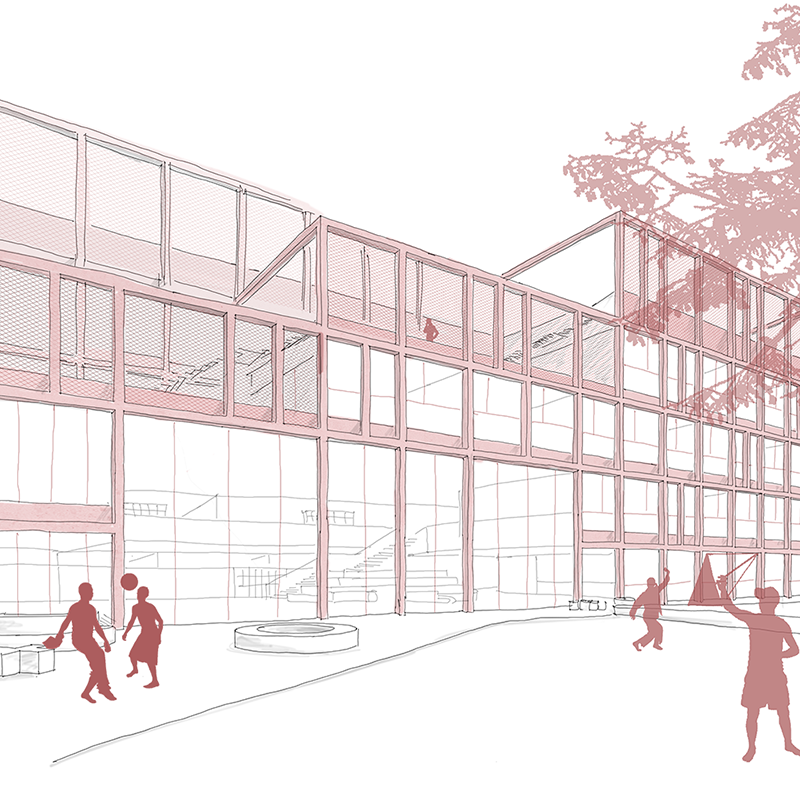
Anerkennung
AHS
Otto-Preminger-Straße
Otto-Preminger-Straße
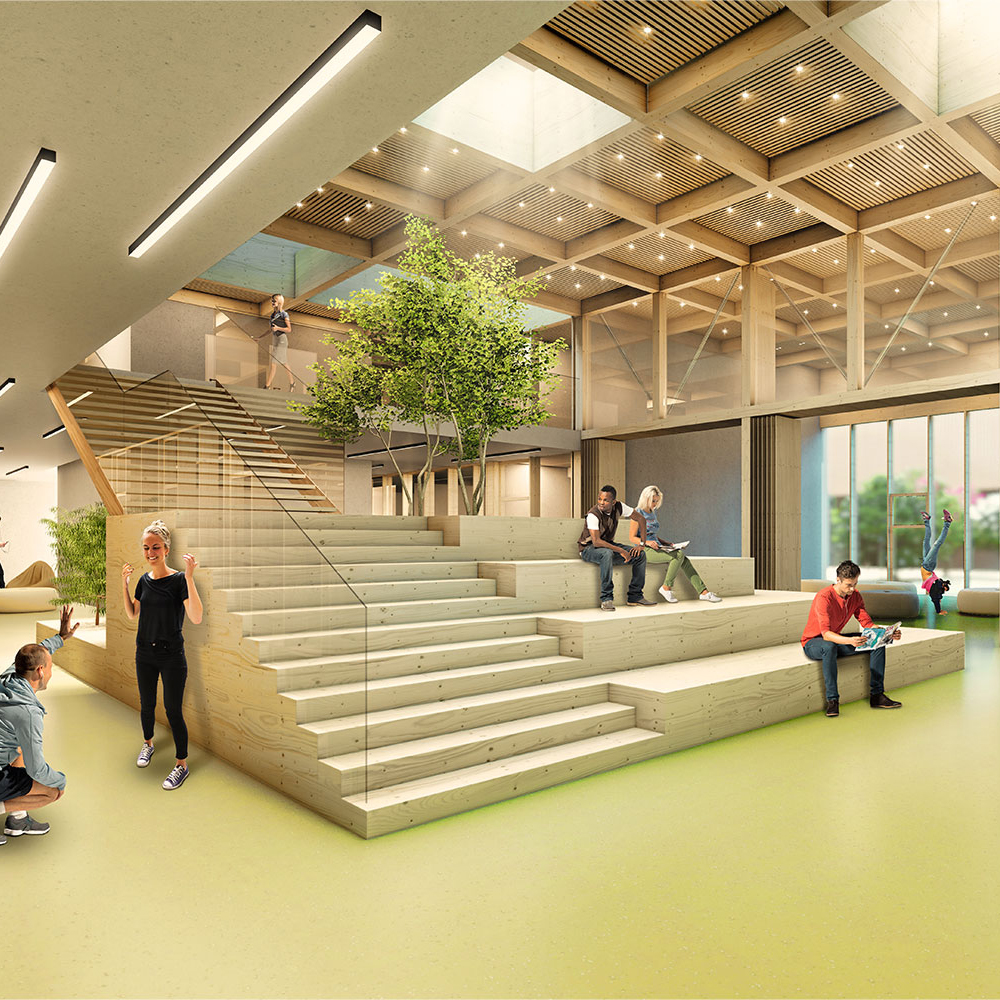
Wettbewerb
Alpen-Adria-Gymnasium
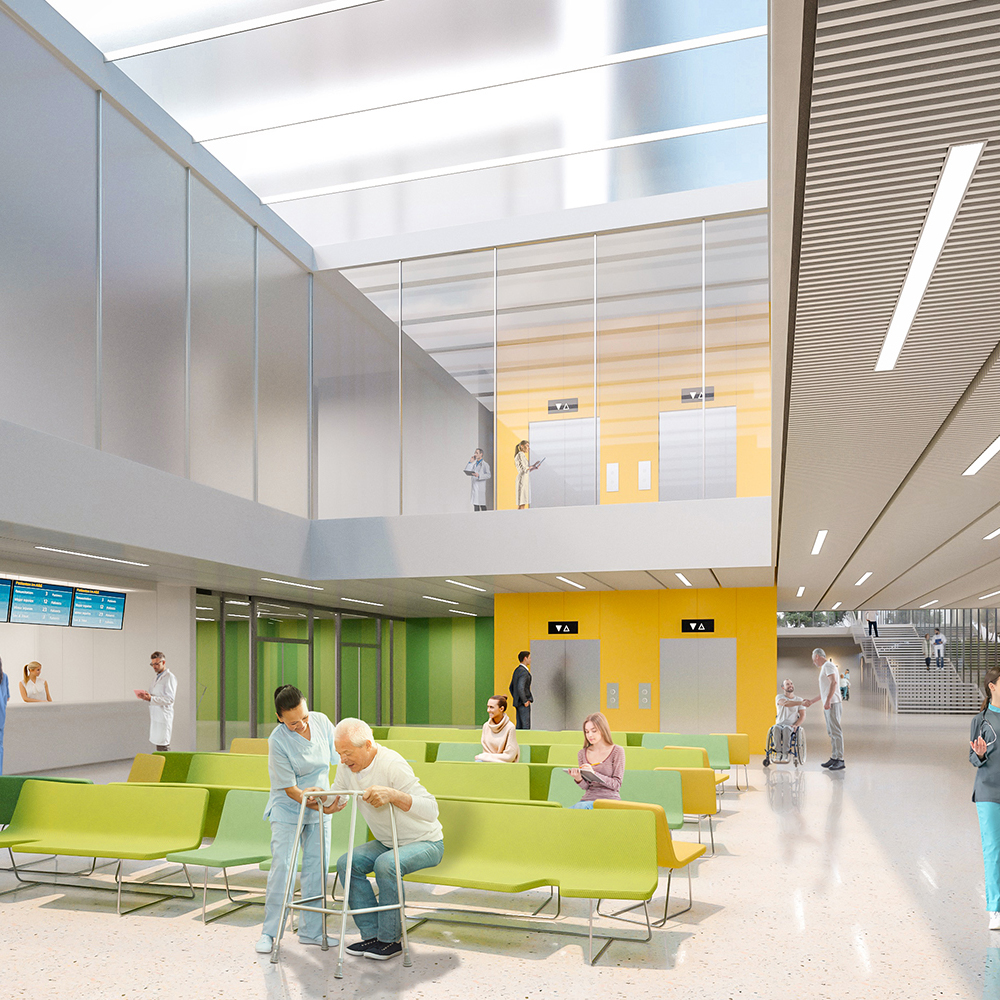
Competition
Oberpullendorf Hospital
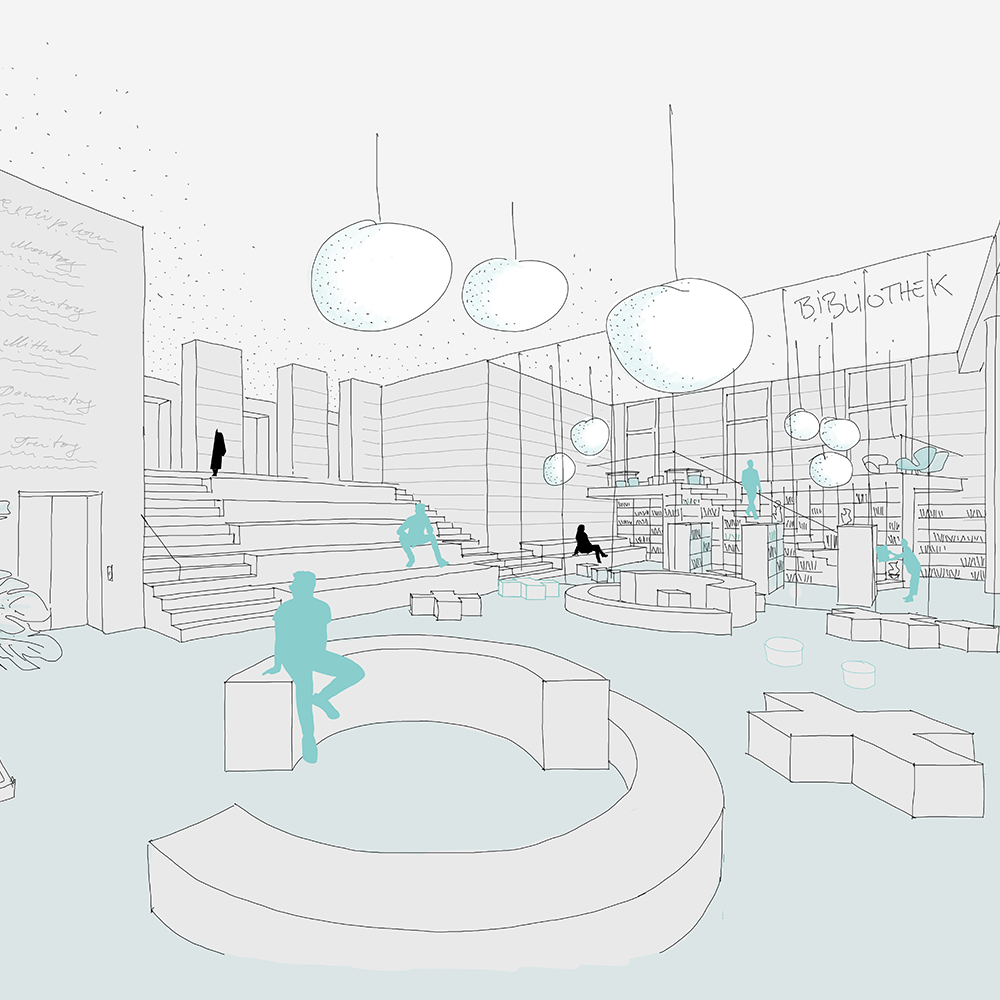
2. Preis
Semmelweisareal Haus 1
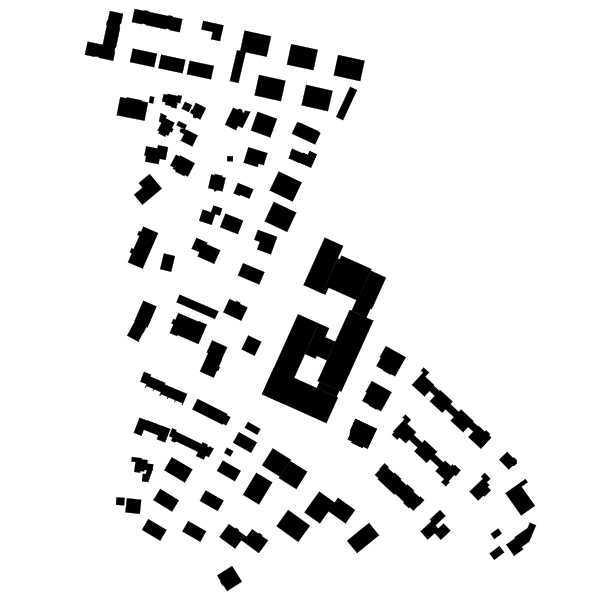
Anerkennung
Federal School Centre Zell am See
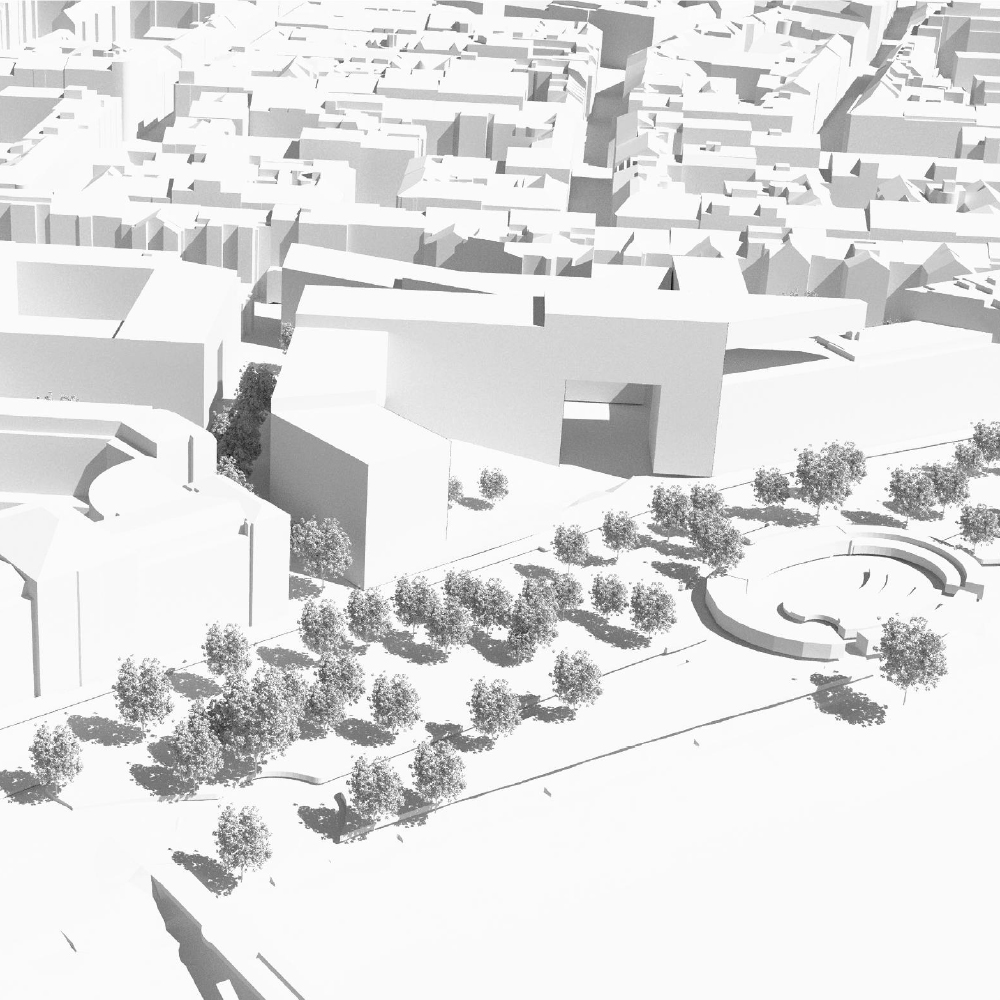
Competition
Leopold's Quarter
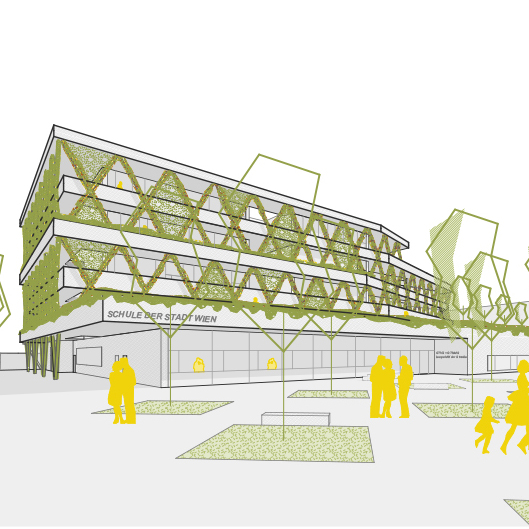
Competition
School Leopold-Kohr-Straße
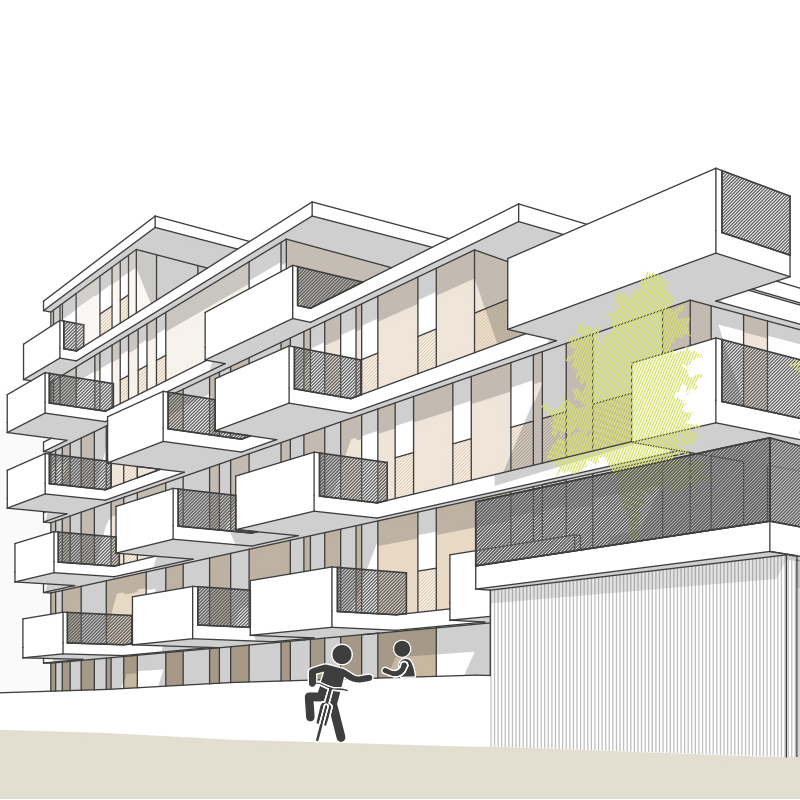
Recognition
Residential development Mendelgasse
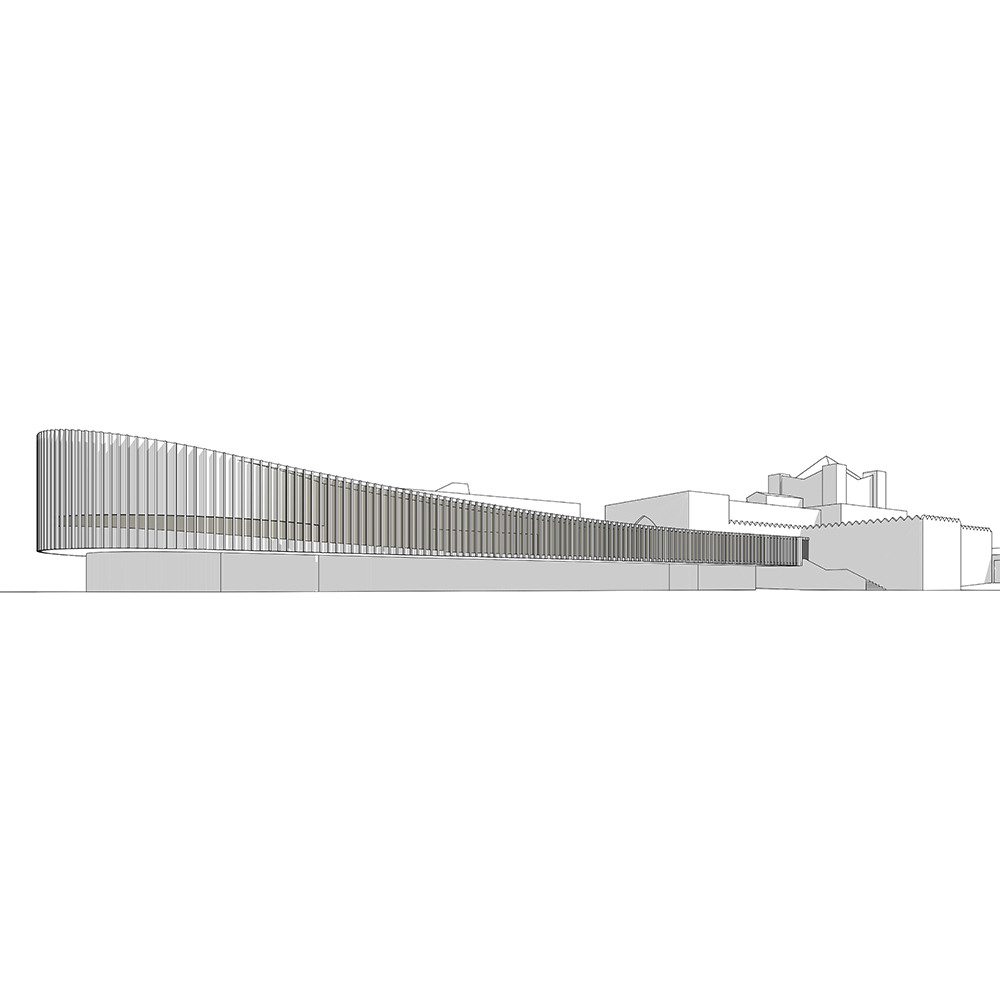
Competition
Extension Crematorium Vienna
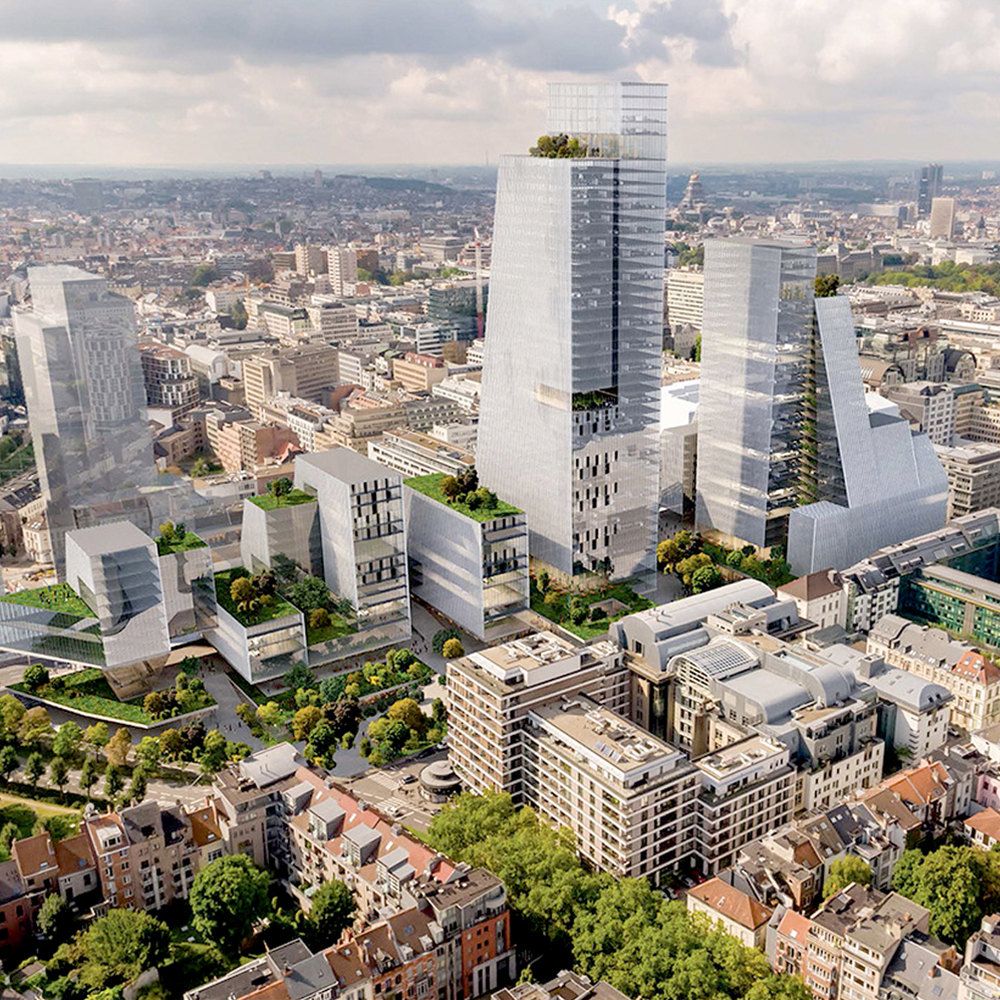
Wettbewerb
Loi 130
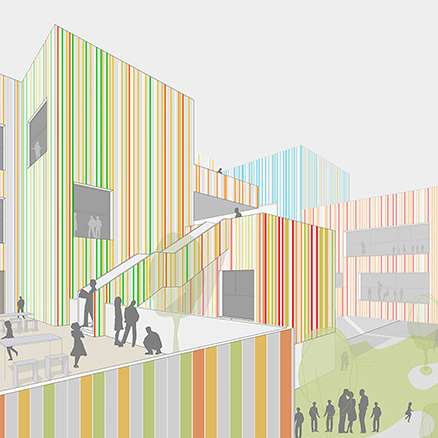
Recognition
Education Campus Deutschordenstraße
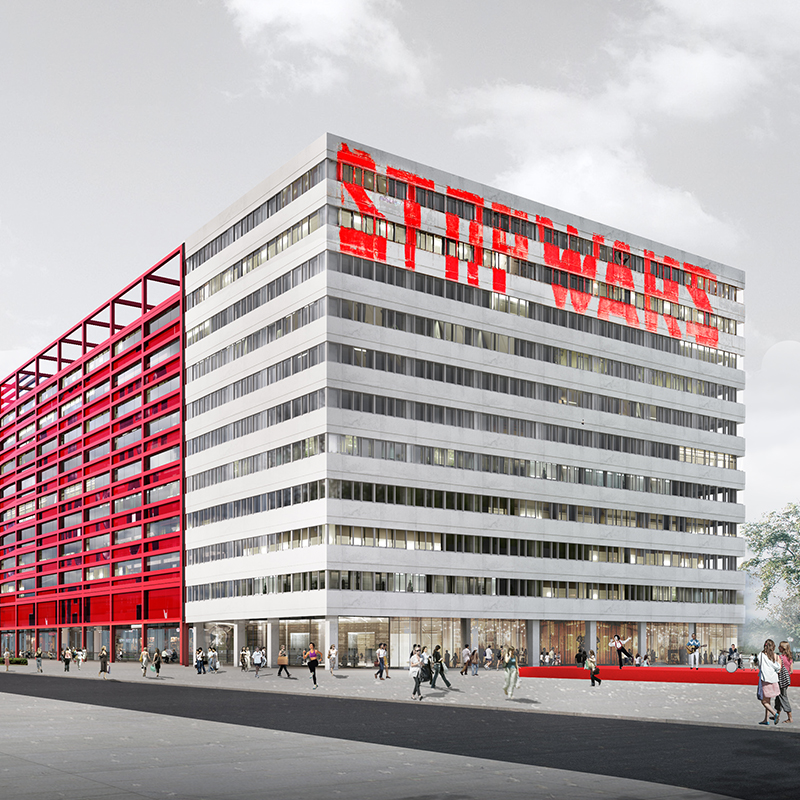
Wettbewerb
Haus der Statistik
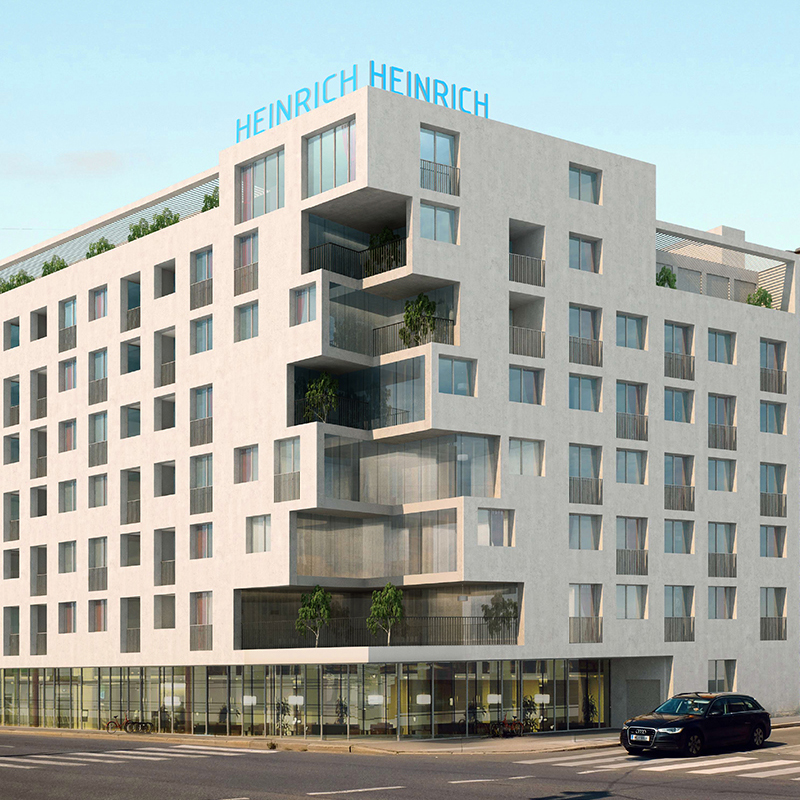
Wettbewerb
Heinrich – Serviced Apartments
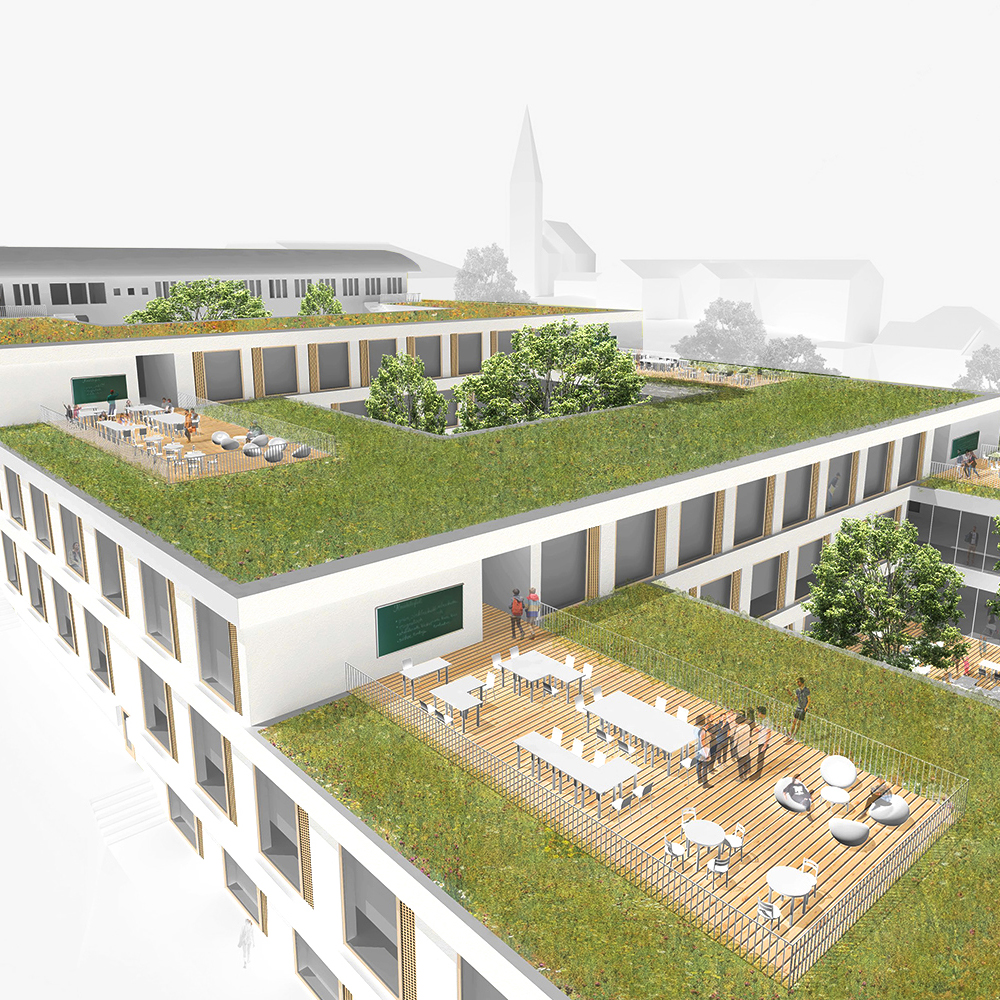
Wettbewerb
Konrad-Lorenz-Secondary School Gänserndorf
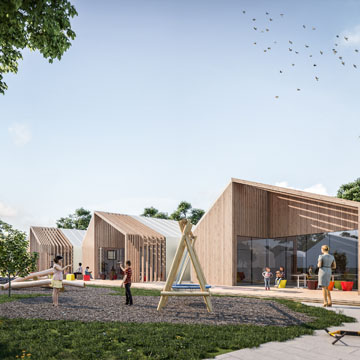
3rd Prize
Lower Austria State Kindergarten Pulkau
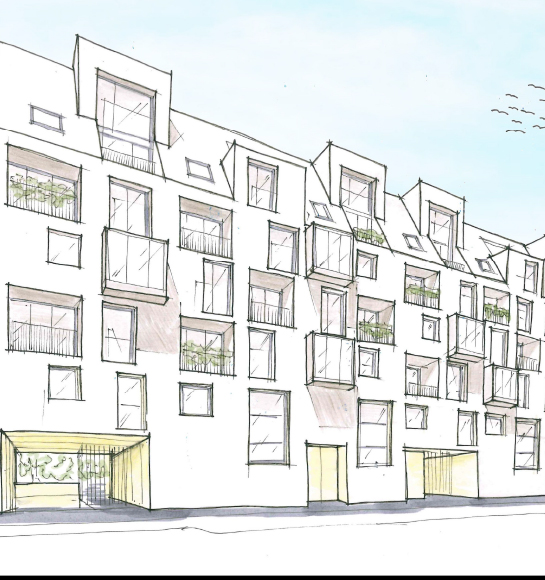
Competition
Residential building Buchengasse
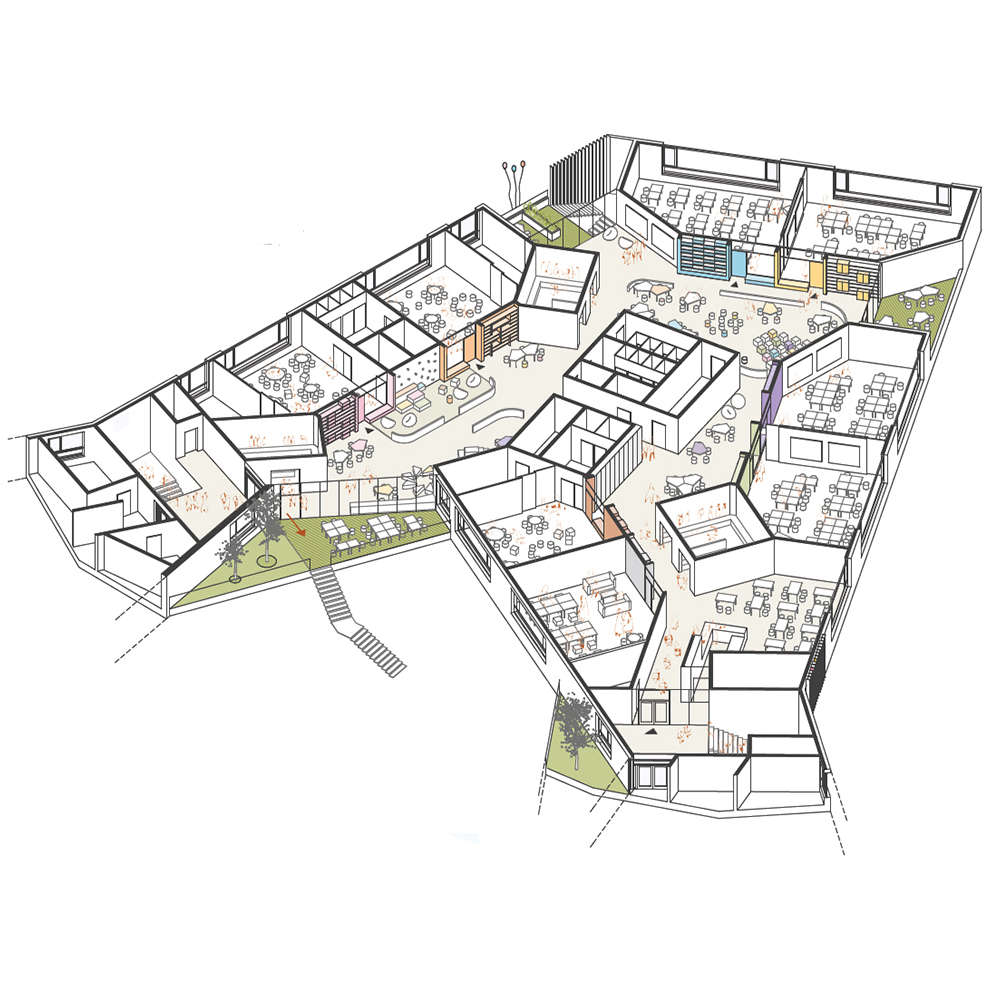
3rd prize
Aron Menczer Education Campus
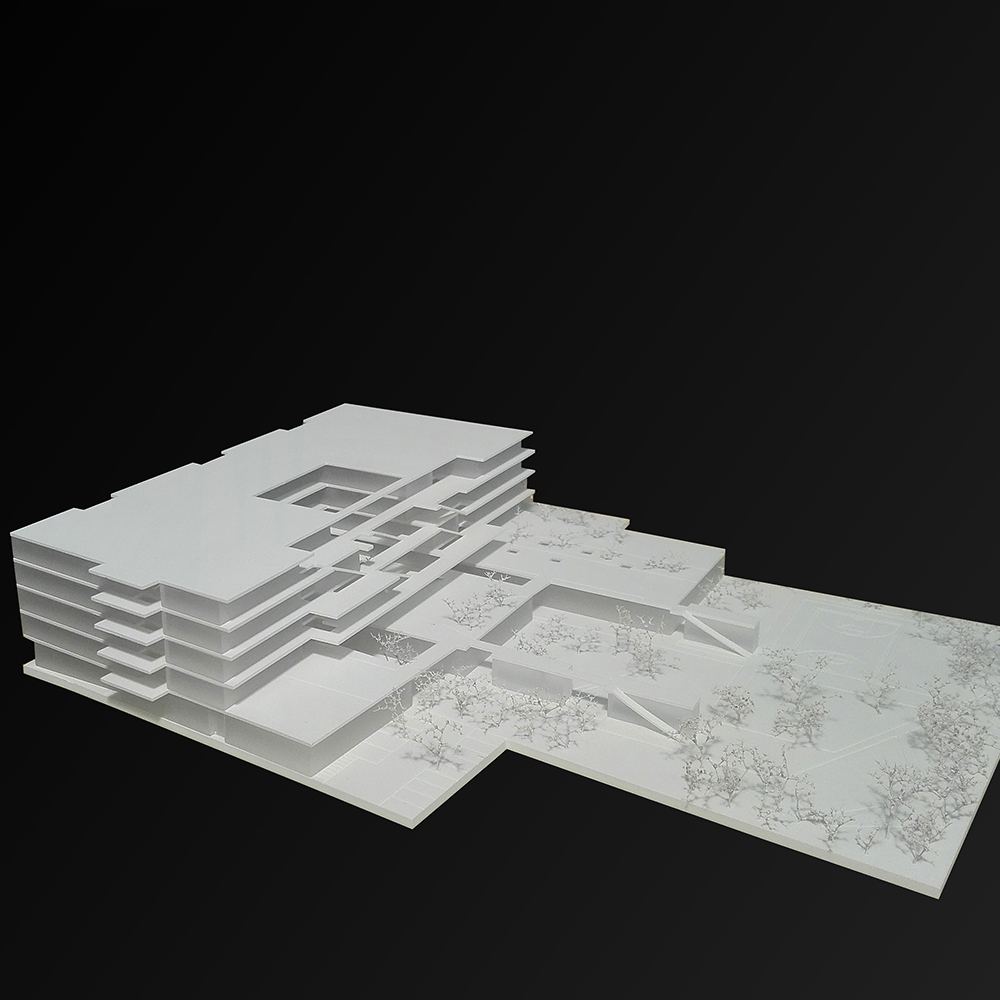
3rd prize
Education Campus Atzgersdorf
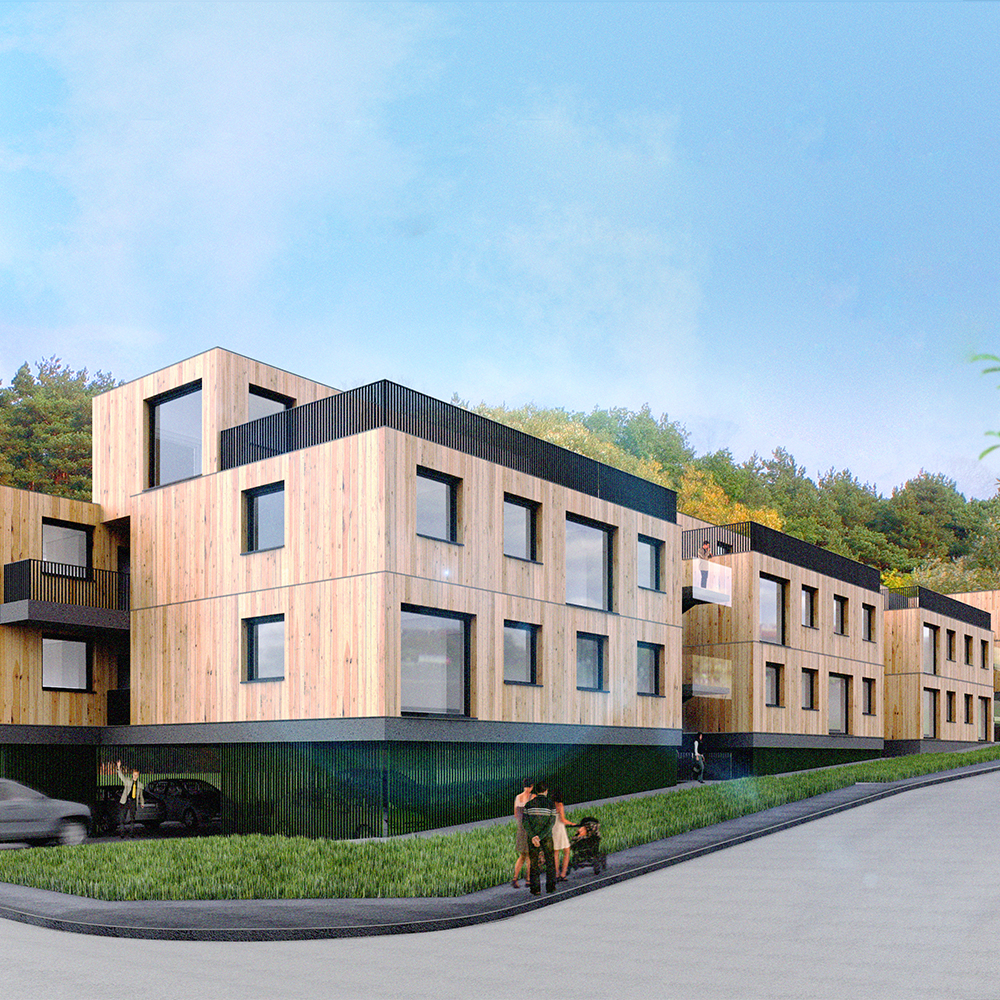
Wettbewerb
Forest Hill - Affordable living in Breitenfurt
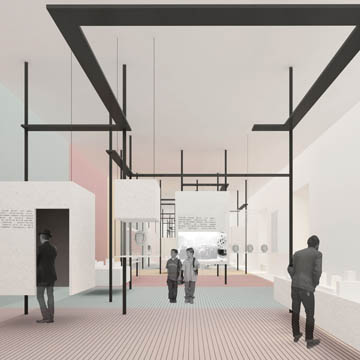
2nd prize
House of History Austria
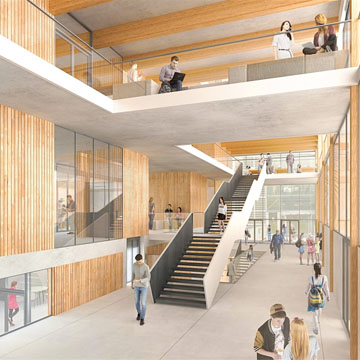
Recognition
New building for the University of Natural Resources and Applied Life Sciences, Vienna
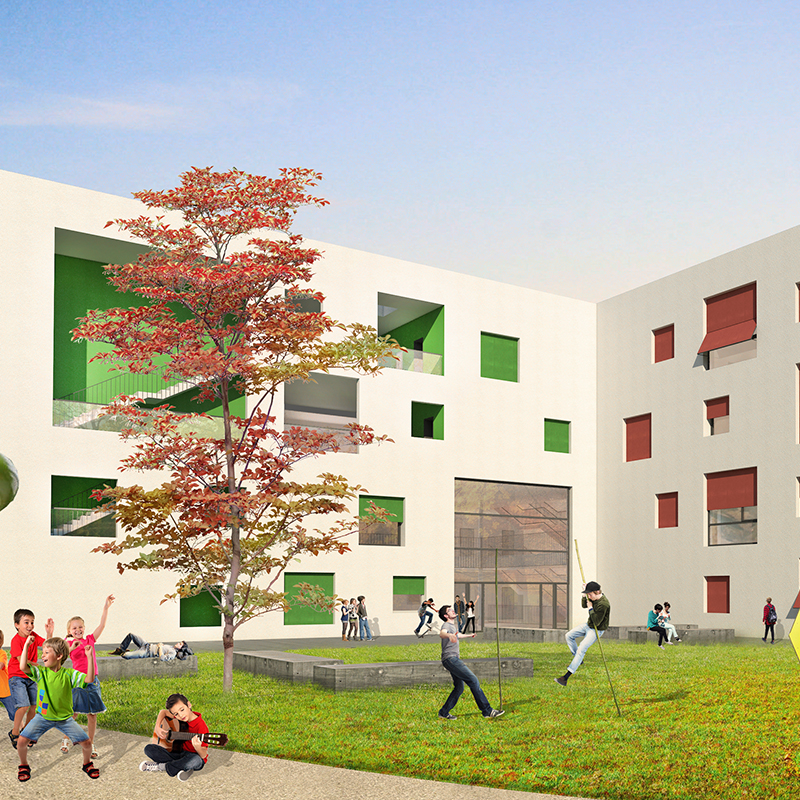
Wettbewerb
NMS (Neue Mittelschule – New Secondary School) Spielmanngasse
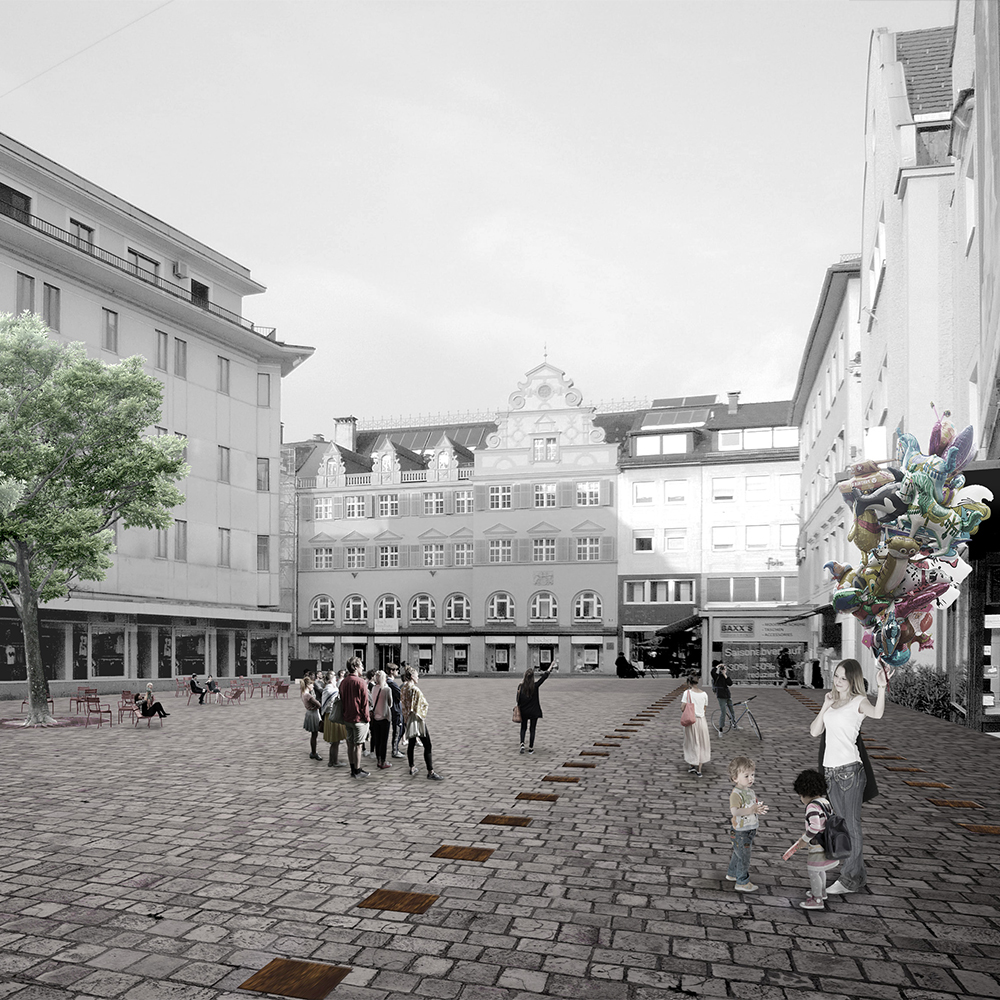
Wettbewerb
Neighbourhood development Leutbühel
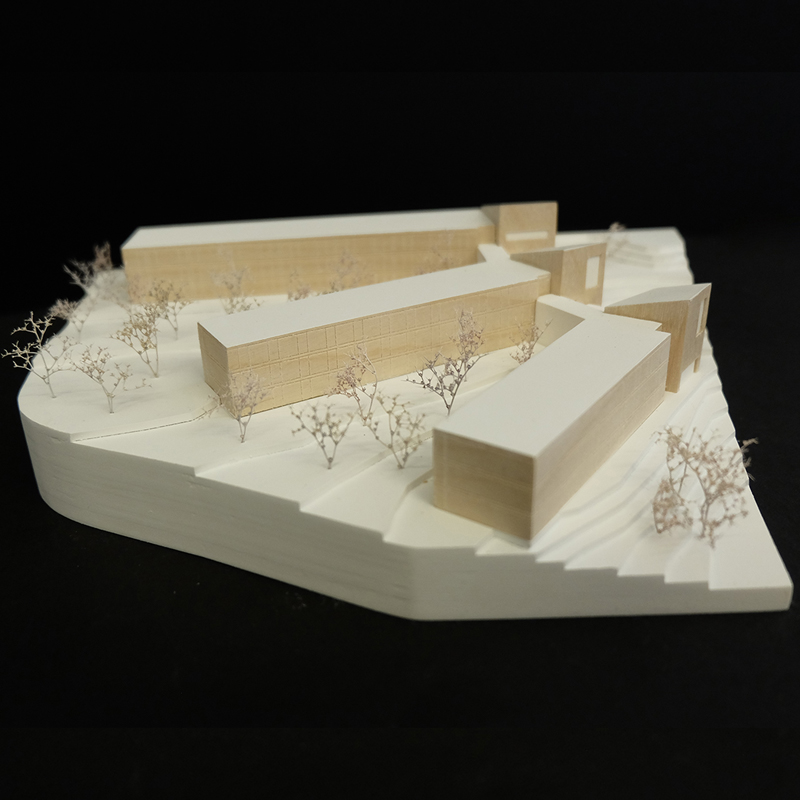
Competition
Students hostel Pitzelstätten
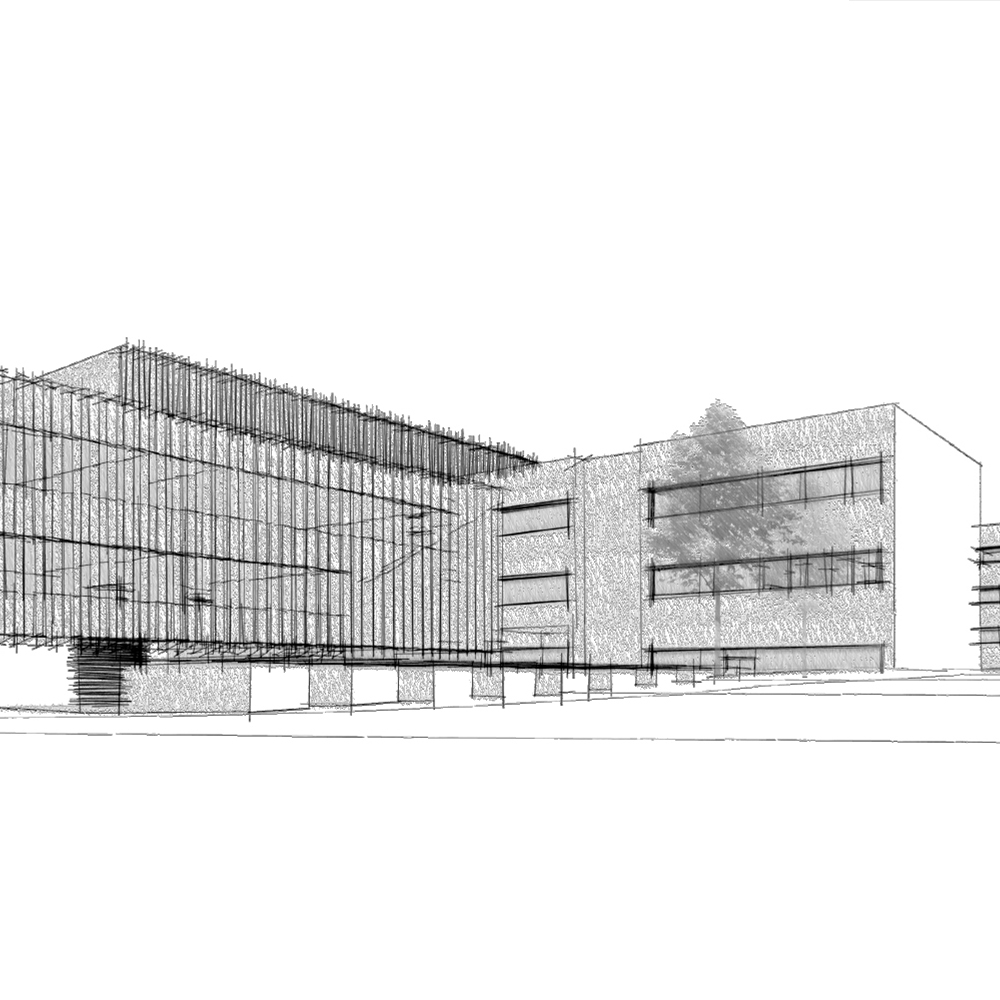
Wettbewerb
School Competence Centre Ferlach
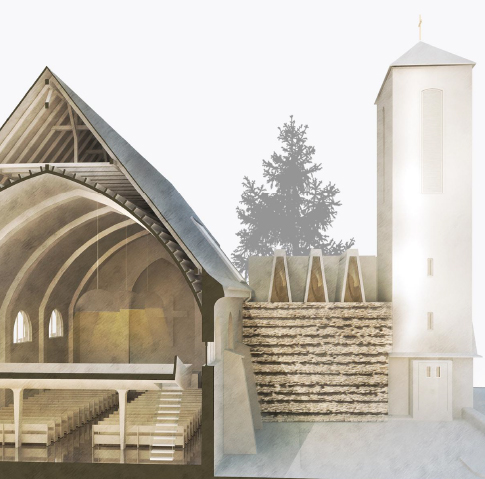
Competition
Parish church of Essling
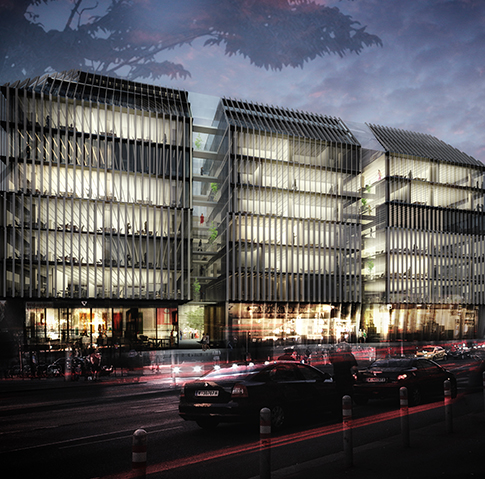
Competition
Rathausstraße 1
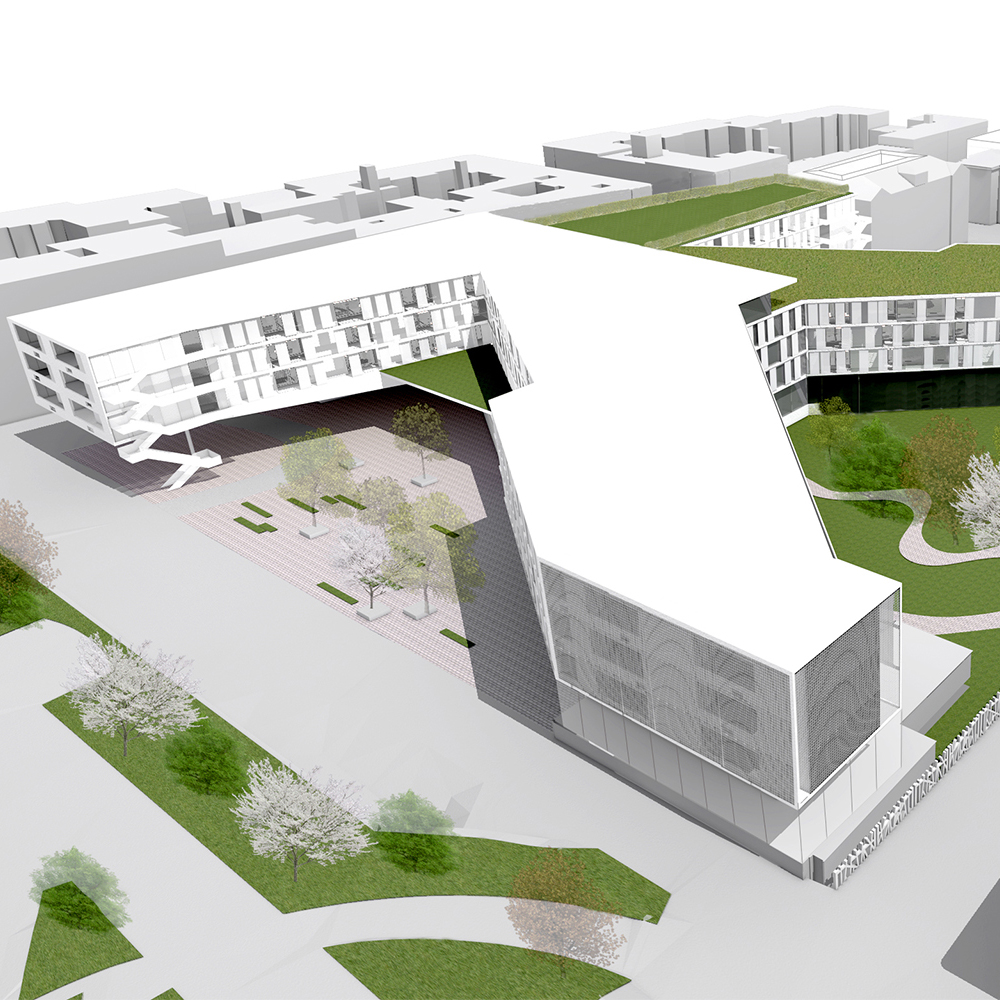
Competition
Kaiserin Elisabeth Hospital
Multifunctional Centre Elsterwerdaer Platz


